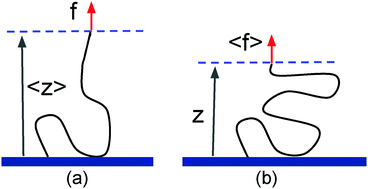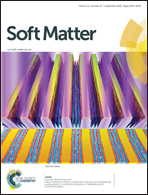Inequivalence of fixed-force and fixed-extension statistical ensembles for a flexible polymer tethered to a planar substrate
Abstract
Recent advances in single macromolecule experiments have sparked interest in the ensemble dependence of force–extension relations. The thermodynamic limit may not be attainable for such systems, which leads to inequivalence of the fixed-force and the fixed-extension ensembles. We consider an ideal Gaussian chain described by the Edwards Hamiltonian with one end tethered to a rigid planar substrate. We analytically calculate the force–extension relation in the two ensembles and we show their inequivalence, which is caused by the confinement of the polymer to half space. The inequivalence is quite remarkable for strong compressional forces. We also perform Monte-Carlo simulations of a tethered wormlike chain with contour length 20 times its persistence length, which corresponds to experiments measuring the conformations of DNA tethered to a wall. The simulations confirm the ensemble inequivalence and qualitatively agree with the analytical predictions of the Gaussian model. Our analysis shows that confinement due to tethering causes ensemble inequivalence, irrespective of the polymer model.



 Please wait while we load your content...
Please wait while we load your content...